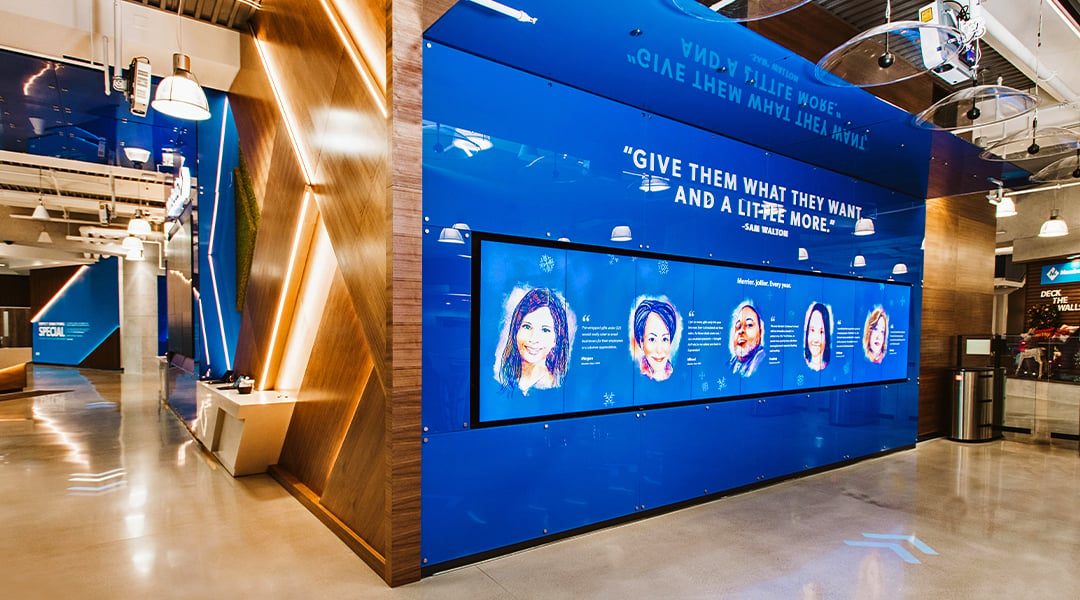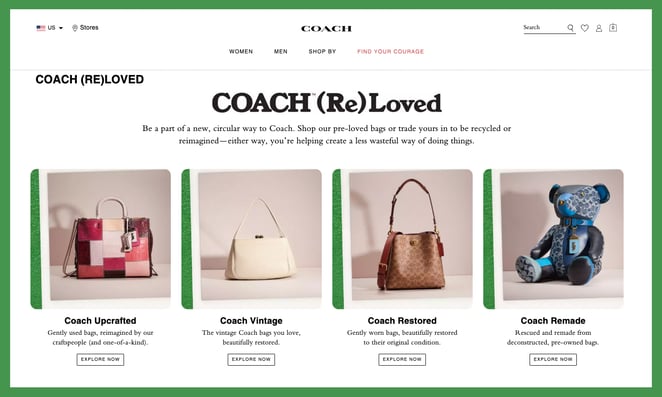Four Critical Focuses for Retail Reinvestment
JCPenney announced, seven months ago a one-billion-dollar reinvestment plan, “with upgrades and enhancements set to be made across its digital capabilities, its in-store physical and technology experiences and its merchandising and supply chain operations.”
In February, fresh off attending the Consumer Electronics Show and National Retail Federation’s “Big Show,” retail analyst Nikki Baird told Retail Brew the “one area where we did see a lot of movement was around the store.”
Retail Brew then noted, “Deloitte’s new 2024 US Retail Outlook report predicts stores will be key to improving the omnichannel experience and outlined some key technologies to become more efficient and improve customer loyalty.”
Forbes reached the same conclusion — its headline noting, “Retailers Invest In Physical Stores Despite Drop In U.S. Consumer Spending.”
But guess what? Consumer spending is remaining resilient.
The conclusion? Store reinvestment is critical in today’s marketplace.
So, what does retail reinvestment in stores look like in 2024 and beyond?
Good question. We see four focuses, which are almost certain to remain relevant for the next few years.
Start with the customer experience
All aspects of store development circle back to the customer experience, including the three other focuses below. There is no great retail without great customer experiences.
The most basic store investment begins with viewing necessary upkeep as grounds for an upgrade, and that starts with a consistent review of your stores via associate and customer feedback, as well as store walks.

Yes, in an age of rapid innovation, the nuts and bolts still matter. From aisles to bathrooms to every end cap and fixture, are your stores clean, neat and well-organized? Is wayfinding clear? What about your lighting? Are all digital screens functional and updated? Is branding consistent throughout?
Amid this nuts-and-bolts customer experience review, you are sure to encounter areas where you can invest in upgrades, such as:
- Augment customer engagement, discovery: Most customers enter your store with specific trip missions, and that is not unlike the online experience of click, purchase and go. So how do you upgrade the multi-sensory experience of physical stores — which online shopping can’t replicate — and inspire browsing, impulse buying and cross- and up-selling opportunities? That’s a critical, enduring question with evolving solutions.
- Better associate experience, happier customers: If your associates are happy, confident and well-trained, they will provide better quality customer support. And, yes, that boosts revenue. So, this should be included in your reinvestment review and plan, which recognizes the interconnectedness of in-store initiatives. As in: Those new digital price tags help and delight customers and also ease burdens on associates.
- Flexible design anticipates ongoing reinvestment: Seasons change and so should stores. As you reinvest, consider modular designs that anticipate frequent changes. Ensuring spaces can regularly present a new feel to customers enhances their experience and inspires loyalty, particularly when it reduces redundancy while not complicating the wayfinding of shoppers on specific trip missions.
Omnichannel integration and upgrade
Just as improving the customer experience is a continual focus for retailers, so too is the need to evaluate and integrate the latest technology into your omnichannel experience.
This includes pairing improved customer data collection and data analysis, which then informs store design, merchandising, inventory management and the integration of all customer touchpoints.
 Sam's Club reimagined corporate headquarters digital display.
Sam's Club reimagined corporate headquarters digital display.
Some potential areas for investment:
- Artificial Intelligence (AI): AI is the new big thing and for good reasons. We’ve only begun understanding what it can contribute to retail, from data analytics to supply chain management to marketing to advertising and content creation. Its omnichannel contributions will unquestionably be immense in both the near and long term.
- Augmented & virtual reality (AR, VR): These two technologies, unlike AI, have been more about consideration than action over the past few years. But that could change fairly quickly. As noted by Retail Wire, “The total AR/VR market in the U.S. is estimated to be $10.3 billion in 2024, increasing at an annual growth rate of over 10%.” Integrated into in-store app use, these tools could provide customers greater confidence in their shopping choices, particularly with clothes, tools and furniture or other big-ticket items.
- Retail media: Retail is no longer just about stores and online purchases. It’s now about a “commerce-everywhere” future of streaming content, social media and personalized marketing available across multiple channels, from stores to your living room sofa. Businesses are expected to spend $60 billion to advertise on U.S. retailers’ media networks in 2024, according to estimates from eMarketer, a market research company. It’s a growing revenue stream, one that can offer a new line of brand engagement.
- Digital signage: Digital screens can do more than simply upgrade static signage. They can become a canvas for your brand story. They can be immersive, informative and entertaining. A strategic digital signage strategy can grab customer attention and then direct it where you want it to go.
Brand elevation, differentiation
Stores play a crucial role in building brand identity and customer loyalty. By reinvesting in stores, retailers can create unique and immersive brand experiences that resonate with customers, helping to differentiate your brand from competitors.
Just like upgrading the customer experience, upgrading your brand identity is about holistic thinking. And, of course, in retail, these two are inextricably intertwined.
A strategically designed and thoughtfully maintained store with purposeful and consistent branding is a powerful tool for communicating your brand identity. Your layout, décor, wayfinding, lighting, digital integration — essentially all of your brand’s sensory touchpoints — contribute to customers’ perception of your brand.
"Just like upgrading the customer experience, upgrading your brand identity is about holistic thinking. And, of course, in retail, these two are inextricably intertwined."
Distinguishing your brand with customers also can include brand partnerships, pop-up stores and community events. There are no rules. If you surprise and delight a customer, you elevate your brand.
Investing and reinvesting in a visually appealing and well-maintained space and creating moments of surprise and delight inspires a stronger emotional connection with customers, fostering brand loyalty and advocacy.
Sustainability, circular retail
Reducing environmental impact, recycling and sustainability programs can save you money, thereby justifying themselves with ROI. Your customers also care about your efforts (or lack thereof), so legitimate initiatives are appreciated and boost your brand’s esteem.
It’s more than celebrating your recycling. It’s about focused efforts to reconsider your consumption models, including investing in circular retail, which keeps products and materials in use longer, instead of ending up in landfills.
 Coach (RE)Loved sells and trades "pre-loved" or "gently used" products through a resale business model.
Coach (RE)Loved sells and trades "pre-loved" or "gently used" products through a resale business model.
AI and its analytical learning capacities will play a role here, too, upgrading asset allocations and utilization through supply chain management and inventory forecasting.
The ultimate takeaway here, as Miller Zell often notes, is there is no finish line in retail. You don’t refresh your store and then move on to something else. You constantly evaluate, measure and adjust.
Reinvesting in your stores at scale is about meeting your evolving customers where they are and anticipating where they are headed, creating compelling shopping experiences, driving customer engagement and building a strong brand presence at every touchpoint.